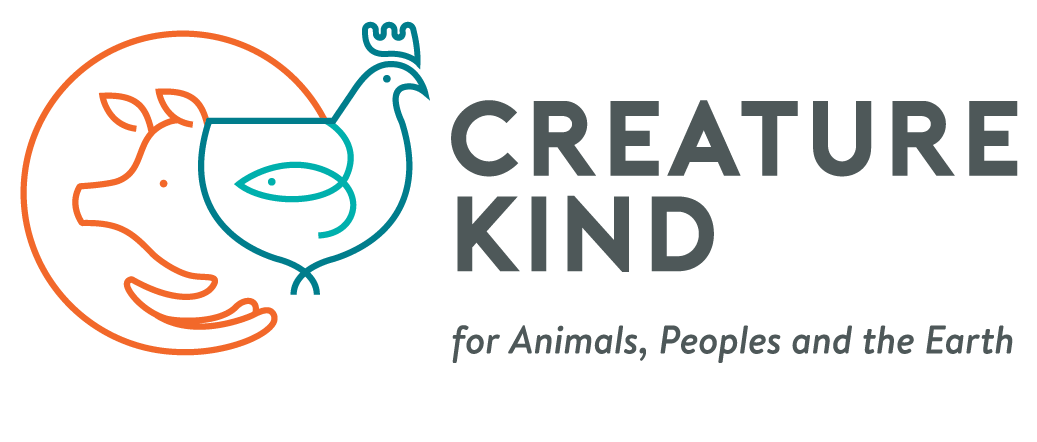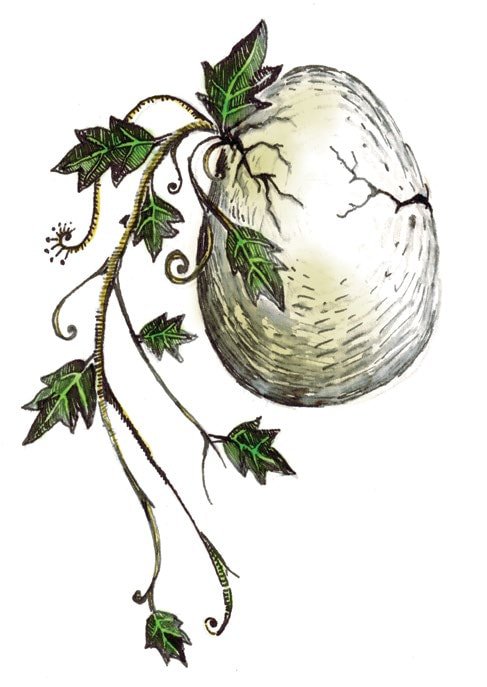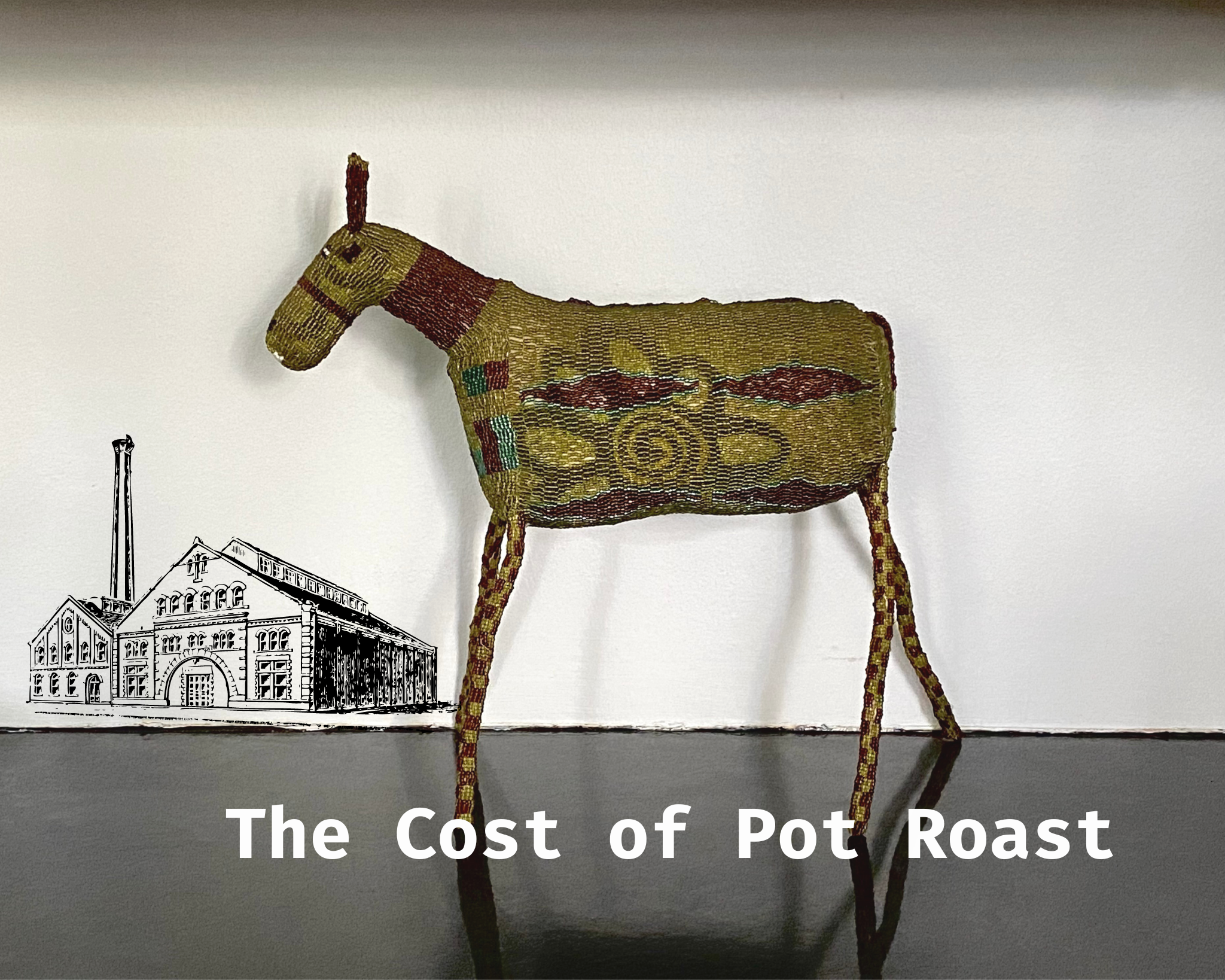By: Liesl Stewart
Art by Zach Stewart
In my previous blog post, I used a conversation I overheard about the high cost of pot roast to write about the corporatization of our food systems–and specifically animal agriculture–in the US and the world. As corporations use industrial production methods to farm animals, Creation pays heavy costs. The earth, the environment and climate, plants, and animals (human and nonhuman) all suffer in the name of profit. I will talk more about these costs, but let me first talk about seeds and life.
According to the Gospels, Jesus sometimes told parables about seeds to explain the ways of his governance. I’m a gardener, so I do love these seed parables. For a few years now I’ve chewed over one particular parable in Mark’s Gospel:
He also said, “The kingdom of God is as if someone would scatter seed on the ground and would sleep and rise night and day, and the seed would sprout and grow, he does not know how. The earth produces of itself, first the stalk, then the head, then the full grain in the head.” (4:26-28 NRSV)
I find grace in this parable. The seed sprouts and grows, even when the farmer isn’t attentive to it. Yes, they scattered the seed, maybe even poured water over them; but the farmer couldn’t make the seeds themselves grow. The farmer’s work is to serve the life within the seeds, to help with the external factors that make the seeds flourish–watering, pruning, mulching, and feeding. The farmer even gets to rest from their work as part of the growing cycle.
The grace for me is the expansiveness of life formed within each tiny seed. A blueprint for growth is embedded in the seed’s matter, and a mysterious life force creates new, differentiated cells as if out of nothing. The seed grows to become the glorious plant it was created to be. Life pulses forth with vibrant color and splendor in God’s created order, and it is our humble, but sacred, work as human animals to serve this life.
But we know the parabolic farmer could have gone to the fields and uprooted the seedlings. They had the power to bring death to those plants. And if we extrapolate this parable to the present era, human animals collectively have the power to affect weather patterns that bring death to the plants.
In his book, Carter makes a clear call to reject this corporatized system and unhitch ourselves from food institutions dealing death to Creation, and instead to “create ‘food institutions’ that are at the service of life.”2
At the service of life.
I find this phrase so helpful when I think about the kinds of food institutions I want to support. I’ve been learning about food systems, and I believe it’s clear the prevailing corporatized food system doesn’t serve life.
Let’s look at the costs of corporatized farming, costs that don’t serve life:
The corporatization of a country’s farming comes at a terrible cost to the people working in food production systems. It isn’t a coincidence that, in the U.S., meat corporations recruit our society’s most vulnerable people as employees. The system relies on the exploitation of people—disproportionately BIPOC and immigrants—who are desperate for any income, and therefore are willing to work for low wages under harsh and dangerous working conditions, without job security.
The corporatization of a country’s farming comes at a terrible cost to the animals that are farmed. Every nonhuman animal that is farmed is a sentient being able to suffer. When animals are valued only as units of profit, the standards for kind or even acceptable treatment drop lower than the poop-covered cement floors they spend their days on. For their whole miserable lives—from inception to slaughter—these animals are owned by corporations, and their quality of life counts for nothing against their potential to bring profit.
The corporatization of a country’s farming comes at a terrible cost to our climate. We are facing catastrophic climate change if greenhouse gas emissions aren’t reduced. Animal agriculture accounts for 14.5%-18% of human-caused emissions. To meet increasing demands for meat, forests are being cleared to grow feed crops, causing stored carbon to be released into the atmosphere. There are differing opinions about whether meat can ever be produced sustainably (or with the welfare of animals farmed for food in mind) for the global population; but it’s certain that if we are going to avoid catastrophic climate change, we need to substantially reduce our consumption of animal-based foods produced in industrialized farming systems.
The corporatization of a country’s farming comes at a terrible cost to public health and the environment. It’s impossible to have thousands of animals living and dying in confined spaces without harmful consequences for public health (antibiotic resistance, the spread of zoonotic diseases and pathogens, etc.) and the environment (pollution, contaminants, and chronic illness). In addition, it costs ordinary people a lot of money to address the harm caused by these corporations. These externalized costs never show up in the companies’ accounting books; they are paid for by the public—either directly or through taxes.
Back to that conversation about the high cost of pot roast. The cost of the meat produced in industrialized farming systems is far bigger than the prices we pay at the cash register. These terrible costs don’t serve life.
Many of us want to rethink the foods we eat and the sources of our food, which could lead to a repositioning in response. We can start by paying attention to where we source our food. There are many localized food networks offering good alternatives to the corporate food system.
Changing eating and food shopping habits can feel overwhelming, but good, lasting changes don’t have to be dramatic or abrupt. I can speak from my own experience: over the past sixteen years, my family has been on a food journey that has transformed the way we eat. It has been a gracious journey of many small changes made over time. Through participation in a food buying collective, we thoughtfully and intentionally changed the foods we buy, from whom we buy, and our purchasing rhythms.
The grace has also been that we haven’t journeyed alone. There’s still much to learn, and we have been strengthened by joining our efforts with other people seeking to eat in the service of life.
2. Christopher Carter, The Spirit of Soul Food: Race, Faith, and Food Justice (University of Illinois Press, Champaign, 2021), Introduction, Chapters 1 & 2, Rakuten Kobo.↩
3. Around the world more people are eating more meat each year, and that increase is mostly produced through industrialized systems. In 2018 the average person in the USA ate a record 220 pounds of meat. (Eleanor Cummins, “America’s obsession with meat, explained. Here’s the beef,” Popular Science, Oct 28, 2019, https://www.popsci.com/why-americans-eat-so-much-meat/)↩
4. Advocates for regenerative farming methods argue that when farmed animals are allowed to graze and forage naturally on managed pastures, water, carbon and nutrients are sequestered in the soil. They argue that in this way regenerative systems improve ecosystem resilience and mitigate climate change. ↩
5. What is DefaultVeg? DefaultVeg is simple. By making plant-based food the default, we make the choice at every meal to help animals, the environment, and other people (including farm and meatpacking plant workers all over the world). At church or other group events, we give people the choice to opt in for meals with animal products if necessary, instead of having to opt out of them. A DefaultVeg approach is simple, inclusive, and cost-effective.↩


